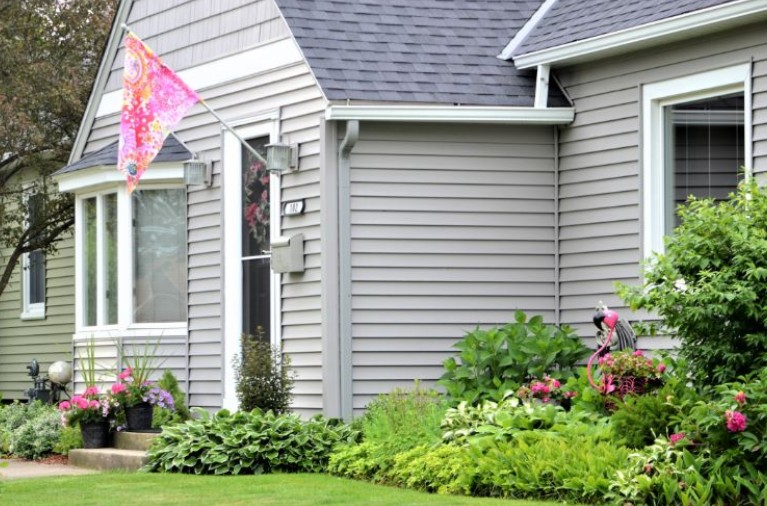
Siding Installation: What Homeowners Need to Know Before Starting
Replacing your home’s exterior is one of the most effective ways to upgrade both appearance and durability. A fresh facade improves curb appeal, blocks moisture, and helps your home stand up to tough weather. When planned well and executed by pros, siding installation becomes a long-term investment that raises comfort, efficiency, and resale value.
For a smooth project with reliable results, consider working with experienced professionals for siding installation in Rhode Island. In the early planning stage, review budgets, timelines, and material choices, then compare proposals so you understand scope and warranties. For examples of project flow and material options, you can review this resource and plan details at your preferred installer’s site, or learn more here.
Why Quality Work Matters
Even the best material can fail if details are missed. Small gaps or loose panels allow wind-driven rain to slip behind the cladding. Trapped moisture invites mold, stains, and framing damage. Skilled crews follow manufacturer specs, use proper flashing, and set clean courses that shed water away from the house.
Pros also plan for building movement and temperature swings. Correct fastener spacing, expansion channels, and sealed penetrations keep the exterior stable across seasons.
Choose Materials With Intention
Modern options are wide-ranging, each with its own strengths.
- Vinyl delivers value, broad color choice, and minimal upkeep.
- Fiber cement mimics wood grain and resists fire and pests.
- Engineered wood offers warmth with factory coatings that resist swelling.
- Cedar shingles give timeless character and natural insulation.
Match material to your climate, design goals, and maintenance comfort. Ask to see full-size samples outdoors so you can judge color in natural light.
Insulation and Efficiency
Siding can support a more efficient envelope. Rigid foam sheathing or insulated panels reduce thermal bridging and help rooms feel steady through hot and cold spells. Tight seams and well sealed housewrap limit drafts, which can lower energy use without changing your daily habits.
Project Timing and Weather
Crews can work most months, yet mild seasons are ideal. Planning your siding installation for spring or summer reduces weather delays and helps adhesives and sealants cure evenly. Order materials early to avoid stock shortages and keep your schedule predictable.
Permits, Codes, and Site Readiness
Your contractor should secure permits and follow local codes. Before day one, move patio furniture, trim shrubs, and clear pathways. Inside, remove frames and shelves on exterior walls to prevent rattling while crews fasten panels.
Ask Better Questions
Strong proposals are clear and detailed. Ask about:
- Crew experience with your chosen material
- Underlayment, flashing, and moisture barrier plan
- Disposal of old cladding and jobsite cleanup
- What is covered under workmanship and manufacturer warranties
Clear answers reveal process discipline and help you compare bids beyond price alone.
Common Pitfalls to Avoid
The lowest quote may end up costing more later if shortcuts result in leaks or waviness. Another mistake is skipping a pre-install inspection of the sheathing and trim. Sound substrates matter. If rot is found, replace it before new panels go up. Avoid mixing incompatible sealants that can stain or fail early.
Coordinate Exterior Upgrades
Many homeowners bundle windows, gutters, or attic ventilation with the new exterior. Coordinating trades can reduce labor trips and align color selections. Request a sequence plan that ensures flashing at windows and doors integrates seamlessly with the wall system, resulting in a clean, dry finish.
Care and Maintenance
Once the work is complete, protect your investment. Wash panels with garden hose pressure and a mild soap. Avoid harsh abrasives. After major storms, walk the perimeter and look for loose trim, cracked caulk, or backing that needs touch-up. Quick fixes prevent small issues from spreading.
Safety and Building Guidance
For a deeper look at weather barriers, air sealing, and moisture control, review the Energy Saver guidance from the U S Department of Energy. The program explains how the building envelope works and why proper detailing supports comfort and durability. Helpful articles are available at the Energy Saver site.
Signs Your Home Is Ready
Consider a new exterior if you see warped or brittle panels, peeling paint that returns quickly, swollen trim, water stains on interior drywall, or rising energy bills. These clues suggest the wall system is not shedding water or sealing air as it should.
Why Professional Help Pays Off
A seasoned crew brings layout skill, safe work practices, and the right tools. Professional siding installation delivers consistent results, proper flashing, and tidy lines. They stage materials efficiently, keep the site clean, and document the job with photos. Many firms include a final walkthrough and explain care steps so you get the longest life from your new exterior.
Plan With Confidence
A well-executed project improves comfort, protects structure, and uplifts value. With careful planning, sound materials, and proven workmanship, your home will look sharp and stay resilient for years.
Conclusion
Ready to move from research to action. For a precise estimate and a clear plan, schedule a consultation today. Partner with a trusted team that provides expert design advice, seamless permit coordination, and thorough installation. When you are set to begin, reach out to Rhode Island Siding & Exteriors to schedule your consultation and start your project with confidence.
